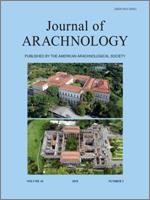We conducted a two-year mark-recapture study of a synanthropic population of the brown recluse spider Loxosceles reclusa Gertsch & Mulaik, 1940 in northwestern Illinois. We used joint live encounter and dead recovery models to estimate adult survival, recapture, and dead recovery probabilities. To estimate adult abundance, we used full-likelihood closed-population models. Monthly survival was constant between sexes (0.73, 95% CI = 0.66–0.78), but males were less likely to be recaptured and an additive effect of time revealed highest recapture probabilities in September. The probability of recovering a marked adult that died during the study was 0.13 (95% CI = 0.07–0.24). Average life expectancy for adults was 94 days, much lower than in prior laboratory studies. Causes of observed mortality were predation by conspecifics and cobweb spiders (Parasteatoda tepidariorum (C.L. Koch, 1841)) or undetermined. A likely source of mortality for this sit-and-wait predator is starvation. Model averaging of full likelihood closed-population models resulted in adult abundance estimates that were similar between males (28, 95% CI = 20–63) and females (28, 95% CI = 26–38). However, the total population of adults including those hidden in harborage (boxes, furniture, crevices etc.) was undoubtedly much higher. Based on count data, immature spiders were as abundant as adults early in the year, gradually increasing to a peak three times greater by mid-summer. Male spiders moved longer distances than females and were less likely to exhibit site fidelity. The average tenure of a female at a specific site was nearly 8 days.
How to translate text using browser tools
1 November 2018
Survival, abundance, and movement of a synanthropic population of the brown recluse spider, Loxosceles reclusa (Araneae: Sicariidae)
Kenneth L. Cramer,
Eric T. Hileman
ACCESS THE FULL ARTICLE

The Journal of Arachnology
Vol. 46 • No. 3
November 2018
Vol. 46 • No. 3
November 2018
Joint live-dead models
mark-recapture
population structure
recapture probabilities
site fidelity




